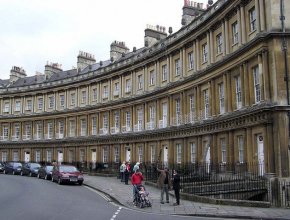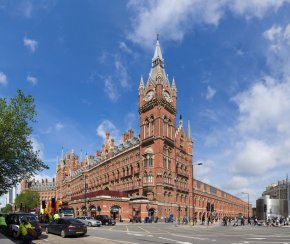London style House
 London plays home to an incredible and eclectic range of architectural styles, formed as the city grew up – its diverse social and cultural evolution reflected in the architectural patterns and designs you can see today. London developed over the years in a much more ad hoc style than many other major cities, both in the UK and the World, creating a sort of mishmash of building styles, materials and shapes. Many of these styles are reflections of monarchic periods, and demonstrate the fashions, technological trends, and social organisation of the era in which they were built. Whether strolling down Notting Hill’s Portobello road or sipping coffee in London’s financial district, there are distinctive themes that run throughout all areas of the city. Here’s a brief look at a couple of those architectural styles that London’s most famous for.
London plays home to an incredible and eclectic range of architectural styles, formed as the city grew up – its diverse social and cultural evolution reflected in the architectural patterns and designs you can see today. London developed over the years in a much more ad hoc style than many other major cities, both in the UK and the World, creating a sort of mishmash of building styles, materials and shapes. Many of these styles are reflections of monarchic periods, and demonstrate the fashions, technological trends, and social organisation of the era in which they were built. Whether strolling down Notting Hill’s Portobello road or sipping coffee in London’s financial district, there are distinctive themes that run throughout all areas of the city. Here’s a brief look at a couple of those architectural styles that London’s most famous for.
Georgian Terraces
The Georgian style many know London for was largely popular during the late 1780s up until the early 1820s, a time of great urban growth with the density of settlements in towns meaning that there was a need to pack a lot of houses into a small space – hence the Georgian terrace was born. It’s predominantly influenced by classic architectural styles of the Greek and Roman era, often drawing inspiration from the neoclassical painting and sculpture that was also popular during this time. Georgian architecture is particularly common in North and West parts of the city, where you’ll find flat fronted terraces of tall houses created with red or brown brick, with large, long windows and an archway surrounding the front door – sometimes featuring Corinthian order columns. These days, many residents choose to paint their front door a bright colour to draw attention to the detail of its surround, and to stand out in a row of otherwise identical homes.
 Victorian architecture was prominent during the middle and late 19th century, and as the name suggests the movement coincided during the reign of Queen Victoria. Heavily influenced by Renaissance and Medieval architecture, this style is much grander than the earlier Georgian terraces, sometimes even referencing Middle Eastern or Asian styles. Typical characteristics of Victorian houses include bay windows, iron railings, and coloured brick patterns in the front façade. For the first time, architects were able to use large sheets of glass, and so the large-paneled sash window was extremely popular – windows previously having had many small panes. Perhaps the best example of Victorian architecture you’ll see in London today is St Pancras Station; a marvel of engineering, it’s one of the best examples of Victorian Gothic in the world… so take a closer look next time you catch a train there. Victorians invented a method to make large panes of glass, called ‘sheet glass’. Due to this innovation, true Victorian windows had six and later four paned vertical sliding sash windows with a single glazing bar down the middle.
Victorian architecture was prominent during the middle and late 19th century, and as the name suggests the movement coincided during the reign of Queen Victoria. Heavily influenced by Renaissance and Medieval architecture, this style is much grander than the earlier Georgian terraces, sometimes even referencing Middle Eastern or Asian styles. Typical characteristics of Victorian houses include bay windows, iron railings, and coloured brick patterns in the front façade. For the first time, architects were able to use large sheets of glass, and so the large-paneled sash window was extremely popular – windows previously having had many small panes. Perhaps the best example of Victorian architecture you’ll see in London today is St Pancras Station; a marvel of engineering, it’s one of the best examples of Victorian Gothic in the world… so take a closer look next time you catch a train there. Victorians invented a method to make large panes of glass, called ‘sheet glass’. Due to this innovation, true Victorian windows had six and later four paned vertical sliding sash windows with a single glazing bar down the middle.






